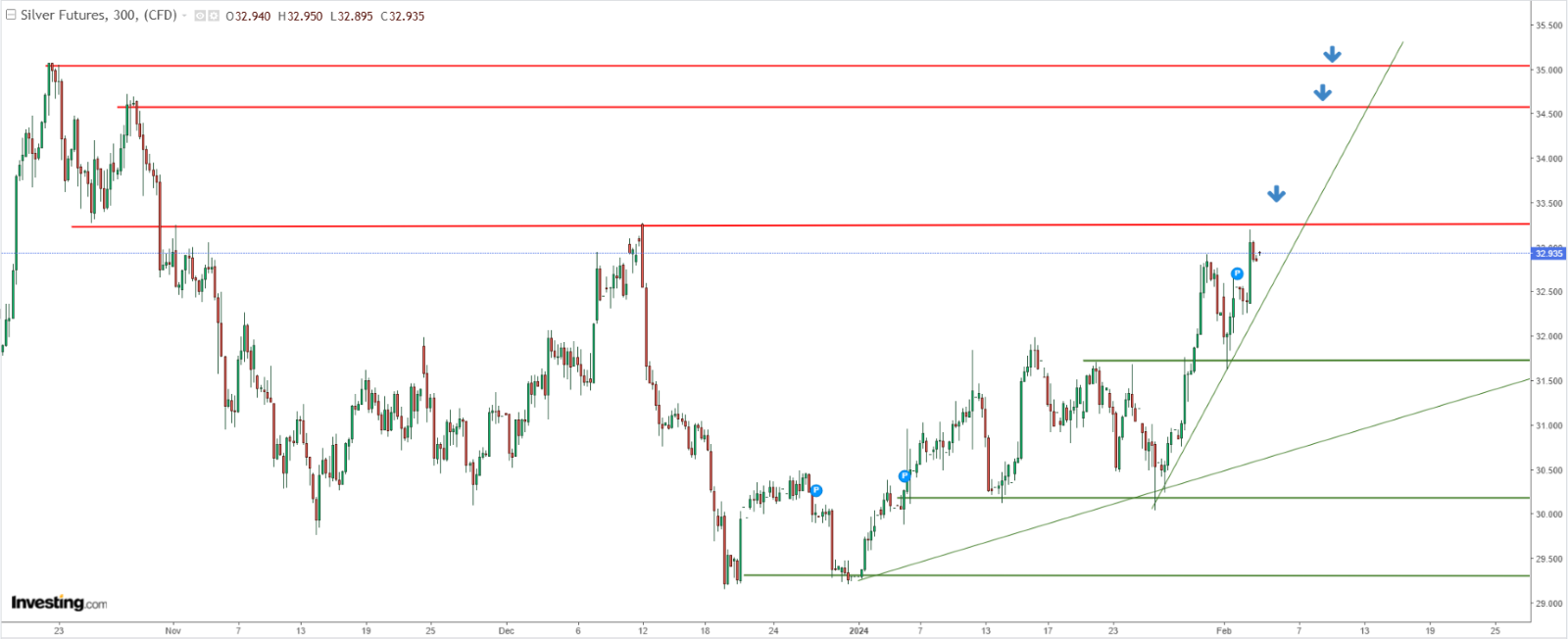Moody’s downgrades Senegal to Caa1 amid rising debt concerns
- Silver’s supply deficit and shifting flows to U.S. exchanges could drive further gains.
- A breakout above $33 per ounce may pave the way for long-term highs.
- Trade wars and energy policy add uncertainty, but demand and Fed moves remain key.
- Are you looking for actionable trade ideas to navigate the current market volatility? Unlock access to InvestingPro’s AI-selected stock winners using this link.
Silver prices have surged this year, fueled by uncertainty surrounding U.S. trade policies. While tariffs and geopolitical tensions have driven recent gains, fundamental factors suggest the rally has room to run.
The Silver Institute projects another year of supply shortages in 2025, despite a potential U.S. energy policy shift favoring fossil fuels. Meanwhile, metals markets remain highly sensitive to Fed policy, and an escalation of the tariff war could slow rate cuts, capping further gains in gold and silver.
From a technical perspective, silver is testing a key supply zone near $33 per ounce. A breakout above this level could clear the path for a retest of long-term highs.
Persistent Supply Deficit Supports Higher Prices
Global silver production has struggled to recover since peaking at over 900 million ounces in 2016. Output fell to an estimated 832.5 million ounces last year but is expected to rebound slightly to 844 million ounces in 2024. Including recycling, total supply could hit an 11-year high of 1.05 billion ounces.
However, a projected deficit of around 250 million ounces remains a concern. If inventory drawdowns accelerate in the second half of the year, silver prices could face additional upward pressure.
Production stability in key mining regions—Mexico, Chile, and Peru—will be a crucial factor. Any disruptions could tighten supply further, amplifying silver’s bullish outlook.
U.S. Energy Policy and Trade Wars Pose Uncertainty
The shift in U.S. energy policy and ongoing trade disputes could impact silver demand. If the U.S. moves decisively toward fossil fuels and tariffs slow global growth, demand from key sectors such as photovoltaics and electric vehicles could weaken. However, any supply shocks or renewed industrial demand could offset these risks.
Physical Silver Flows Shift Toward U.S. Exchanges
An unusual movement of physical silver has emerged in recent months, with large inflows shifting from London and Asia to U.S. exchanges. This trend follows the implementation of a tariff-free storage regime, reducing risks for metals held in New York and Chicago. Additionally, the imposition of 10% tariffs on Chinese goods, alongside Beijing’s retaliation, could reinforce the shift in trade flows. If this pattern continues, it could impact liquidity and pricing dynamics in the silver market.
Silver Tests Key Resistance, Eyes Long-Term Highs
After bottoming near $29 per ounce at the start of the year, silver has gained momentum, approaching a key resistance level at $33 per ounce. A decisive breakout could propel prices toward $34.60, with a potential move to long-term highs near $35 per ounce.

Traders should watch for technical confirmations and macroeconomic developments that could either fuel the breakout or trigger a pullback.
***

Disclaimer: This article is written for informational purposes only. It is not intended to encourage the purchase of assets in any way, nor does it constitute a solicitation, offer, recommendation or suggestion to invest. I would like to remind you that all assets are evaluated from multiple perspectives and are highly risky, so any investment decision and the associated risk belongs to the investor. We also do not provide any investment advisory services.
